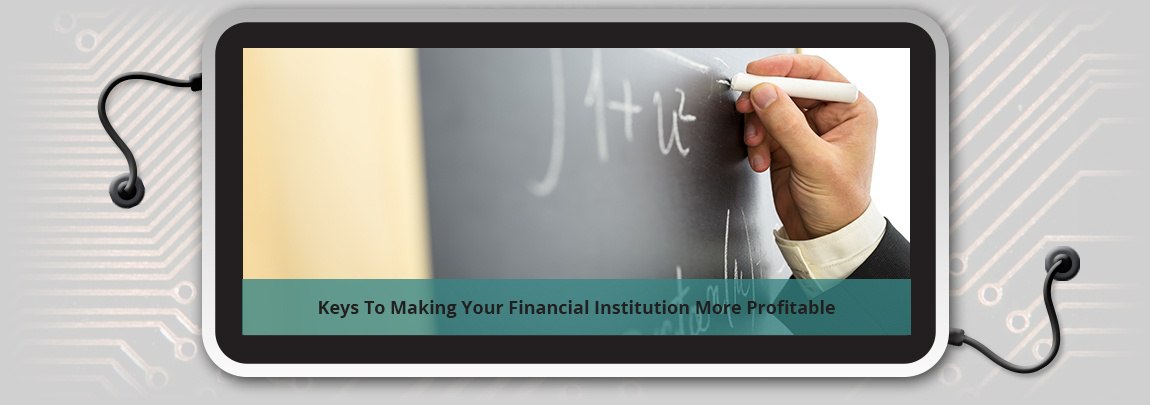Three Tips for Financial Institutions to Cross-Sell Effectively
As more financial institutions focus on growing their revenue base and business, effective cross-selling in the branch becomes paramount. This...
3 min read
 Sean Farrell
:
Jun 18, 2014 9:46:00 AM
Sean Farrell
:
Jun 18, 2014 9:46:00 AM


Change is hard, especially for small to mid-size financial institutions. However if history is the best indicator of “survival of the fittest” within the banking industry, then we know change is necessary. Still, the arguments against automation boil down to an aversion to change. But are these arguments valid? Let's take a look at these myths – one at a time.
The truth is that when your tellers are engaged with counting and authenticating cash transactions, their heads are typically down and engrossed with the task at hand. A teller's concentration is fully focused on accounting for each bill. Typically they are reviewed and compensated based on accuracy. This is certainly not a process that allows for multi-tasking.
Contrary to the argument, automation actually allows the teller to act in a more personal manner. The pressure to count and validate the process is off of the teller, so the teller is free to fully engage with the customer. This face time allows for a friendlier experience and allows your teller to pay attention to helping your customers make important financial decisions – like opening a money market or a line of credit. Automation gives you the ability to promote your tellers to customer service representatives who are better able to cross-sell and ultimately position your bank for greater profitability and growth.
While it's true that your financial institution may not handle the volume of transactions that the regional or national bank down the street processes each week, the case for automation can take shape in nearly any environment where challenges present themselves.
Here's what you'll need to consider:
Do you ever have lines of customers?
Do you have cash exposure?
Do you ever have too much money in your vault?
And back to MYTH #1, do your tellers have ample opportunity to cross sell?
The truth is that automation can help even smaller banks and credit unions make an important impact on the banking process that will improve the experience for your customers and your tellers.
Yes, every financial institution is concerned about upgrading technology. Automation is an investment that delivers a valuable solution for employees and customers alike. And the cost of automation can pay for itself quickly in a number of ways. Perhaps most importantly, it allows your tellers to effectively become consultants and advisors – bringing more value to the banking experience for customers and making for a more rewarding employment experience for your workers.
Leaving the tedious and labor-intensive task to cash recyclers and dispensers can pay for its cost quickly when you consider the following:
Machines don't take sick days.
Machines don't go on vacation.
Machines don't get paid overtime.
So it's easy to see, that while the misperception is that automation is expensive, the opposite is true; automation can not only help your bank save money by helping you run lean and more efficiently. The truth is that cash handling is probably the least profitable transaction managed in a bank setting. And inputting automation is a strategy that provides a consistent timeframe for routine cash transactions, creates a reassuring environment for customers and employees alike. Ultimately, automation gives you the power to create a more profitable environment with an average ROI of 18-24 months.
Change is uncomfortable, especially for older employees. Cash automation has a large learning curve that will affect our service negatively.
That's why we take a very hands-on, reassuring approach to training. And we address out of bounds issues by training and explaining the solution we offer and how if directly affects a streamlined transaction process, a less stressful working environment and customer satisfaction. In fact, one of the best examples of an extreme change in attitude toward automation was an incident where a more senior teller who had been adamantly opposed to learning how to operate a dispenser, latched on to the process so enthusiastically that she insisted on manning the dispenser at the her bank's drive thru window – for the past ten years!
But the biggest case for change is probably an experience every financial institution can relate to:
There are long lines on a Friday afternoon, your drawer is low on cash and you need to do a vault buy but you can't because your head teller is either assisting with a customer with a difficult issue or she's out to lunch.
Here's where a cash recycler or dispenser saves the day. They allow secure vault buys. Automation truly equips your most challenged tellers to be as good as your best tellers. That's an incredibly empowering solution for your workforce.
While automation has been a proven business model for bigger banks, it's also an effective solution for small to mid-size financial institutions. Do your homework. Ask the tough questions and find the right equipment to support your banking structure, your teller line and your customer base. Make the change that can change your business for the better.

As more financial institutions focus on growing their revenue base and business, effective cross-selling in the branch becomes paramount. This...

Profitability. It is a term with which we are all familiar but are challenged with how to achieve profitability and maintain it long term . In the...

How many of you have ever been to the Apple store before?